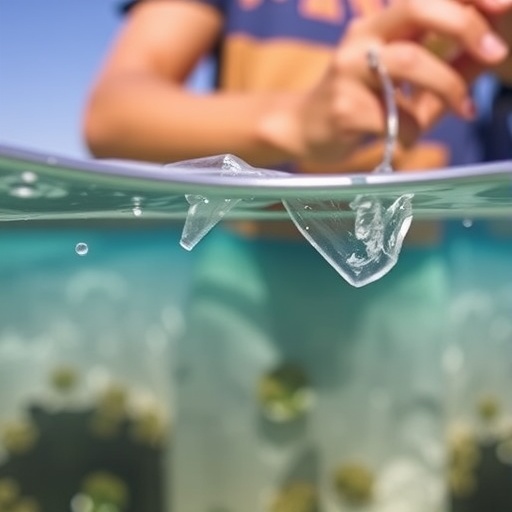The Silent Menace: Unraveling Microplastic Pollution in Africa’s Terrestrial Ecosystems
In recent years, the global discourse around plastic pollution has predominantly centered on marine environments, overshadowing a lurking crisis within terrestrial ecosystems. A groundbreaking study published in Microplastics and Nanoplastics (2025) now brings to light the pervasive infiltration of microplastics across Africa’s diverse landscapes. This investigation, spearheaded by researchers Yh and Mc, uncovers alarming evidence of microplastic contamination in soils, vegetation, and wildlife, setting a critical tone for further research in a region where ecological vulnerability meets rapid urbanization and industrial growth.
Microplastics—particle fragments smaller than five millimeters—have infiltrated every corner of the planet’s ecosystems. Despite the overwhelming accumulation of data on oceanic microplastic pollution, the terrestrial footprint, particularly on the African continent, has remained underrepresented in scientific literature. The paucity of targeted research masks the scale of contamination, impeding the development of effective mitigation strategies urgently needed to safeguard Africa’s biodiversity and public health.
The study meticulously chronicles the current state of microplastic pollution within terrestrial habitats across several African biomes. By compiling sparse data with fieldwork from varied locations, the researchers depict a mosaic of contamination hotspots that span agricultural lands, forest ecosystems, urban settings, and protected natural reserves. Such widespread occurrence hints at diverse sources, including urban runoff, atmospheric deposition, waste mismanagement, and agricultural plastic use, underscoring the multifaceted pathways through which microplastics permeate terrestrial environments.
Key to the study’s profound implications is the realization that soils, often considered robust natural filters, are accumulating microplastics at unprecedented rates. Microplastics alter soil structure and chemistry, potentially disrupting nutrient cycling and water retention. These changes threaten soil fertility and, by extension, the agricultural productivity upon which millions of Africans depend for food security. The findings spotlight an urgent necessity to incorporate microplastic assessment into soil health monitoring frameworks.
Furthermore, the presence of microplastics in terrestrial fauna reflects an insidious penetration of plastics into terrestrial food webs. Research cited within the article illustrates ingestion by insects, birds, and small mammals, with unknown but potentially deleterious physiological and ecological consequences. The bioaccumulation and possible biomagnification of these particles amplify concerns over toxicological impacts, which may extend to human populations engaged in subsistence farming and hunting.
The researchers emphasize significant methodological challenges that hinder comprehensive assessments. Inconsistent sampling protocols, lack of standardized analytical techniques, and limited access to advanced microscopy and spectroscopy equipment in local institutions restrict the capacity to detect and characterize microplastics in environmental samples effectively. Such technical barriers exacerbate data gaps and the underestimation of pollution severity.
To combat these hurdles, the article advocates for collaborative research networks that transcend national boundaries and disciplinary silos. Encouraging capacity-building initiatives, technology sharing, and harmonized methodologies would exponentially increase the quality and quantity of data, informing evidence-based policy interventions. These networks could also facilitate community engagement programs, fostering awareness and participatory stewardship of endangered terrestrial ecosystems.
Importantly, the study situates microplastic pollution within the broader context of Africa’s socio-economic challenges. Rapid urbanization, insufficient waste management infrastructure, and informal recycling sectors augment plastic leakage into the environment. The researchers call for integrative approaches that couple scientific inquiry with policy reform aimed at improving waste governance, promoting plastic circularity, and incentivizing sustainable consumption patterns.
Moreover, the article highlights innovative avenues for remediation tailored to African contexts. Nature-based solutions such as phytoremediation and enhanced soil microbial activity offer promising prospects for microplastic degradation or immobilization. Engineers and environmental scientists are urged to explore locally adapted technologies that combine cost-effectiveness with ecological compatibility.
In parallel, the article underscores the critical need for longitudinal ecological studies to unravel the chronic effects of microplastics. Temporal datasets tracking contamination trends and ecosystem responses will anchor risk assessments and guide adaptive management. Interdisciplinary efforts encompassing toxicology, ecology, socioeconomics, and material sciences are imperative to disentangle complex interactions between microplastics and terrestrial biota.
One of the most compelling narratives woven through this research is the pressing demand for environmental justice. Marginalized and vulnerable communities often bear disproportionate exposure to plastic pollution’s health risks while simultaneously lacking access to mitigation resources. The authors urge inclusive research paradigms that prioritize these populations, ensuring equity in environmental risk reduction.
The article also examines policy frameworks currently in place across various African nations, recognizing nascent but fragmented regulatory efforts targeting plastic pollution. Integration of microplastic-specific provisions into broader environmental legislation could fortify enforcement mechanisms and catalyze regional cooperation. Global partnerships and funding channels should be leveraged to buttress national initiatives.
Elevating public consciousness emerges as a central tenet of effective intervention. The researchers propose strategic communication campaigns utilizing local languages and cultural narratives to foster behavioral change in plastic use and disposal. Education systems, from grassroots to higher learning institutions, play a pivotal role in cultivating an environmentally informed citizenry.
In conclusion, this seminal work spotlights microplastic pollution as an emerging environmental crisis within Africa’s terrestrial ecosystems, characterized by scientific, technical, and socio-political complexities. Addressing this multifaceted challenge necessitates a concerted, interdisciplinary approach that marries robust research with pragmatic policy and community engagement. As the continent embarks on sustainable development trajectories, integrating microplastic pollution mitigation will be instrumental in securing ecological resilience and human well-being.
Subject of Research:
Article Title:
Article References:
Yh, T., Mc, R. Microplastics pollution in terrestrial ecosystems of Africa: current knowledge, challenges, and building collaborative research networks. Micropl.&Nanopl. 5, 15 (2025). https://doi.org/10.1186/s43591-025-00122-z
Image Credits: AI Generated
DOI: https://doi.org/10.1186/s43591-025-00122-z
Keywords:




